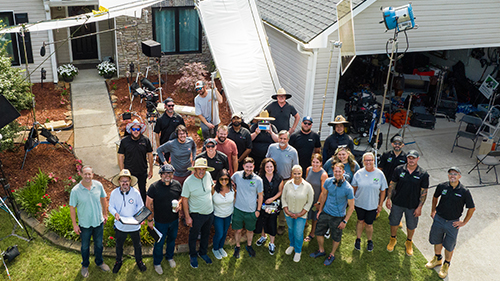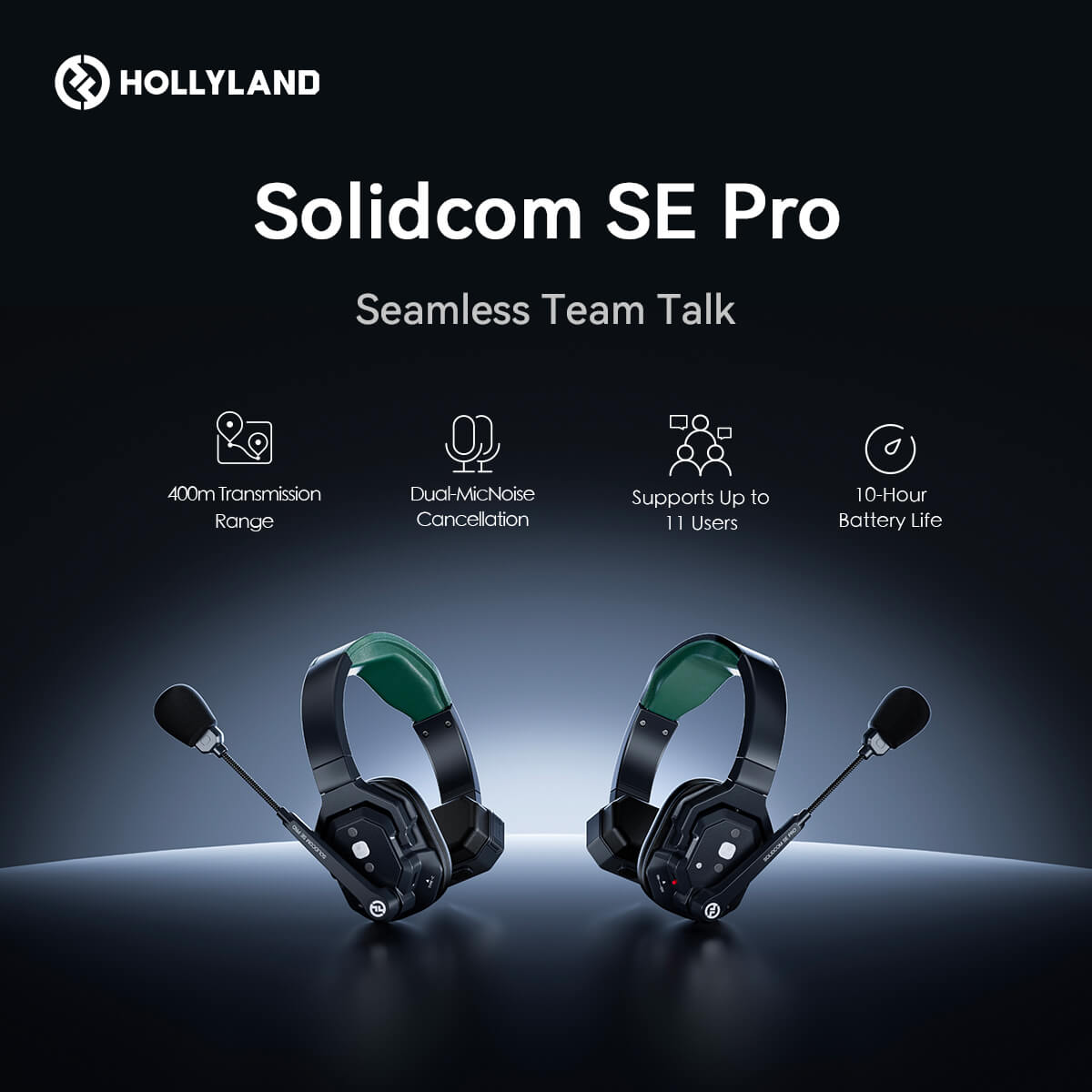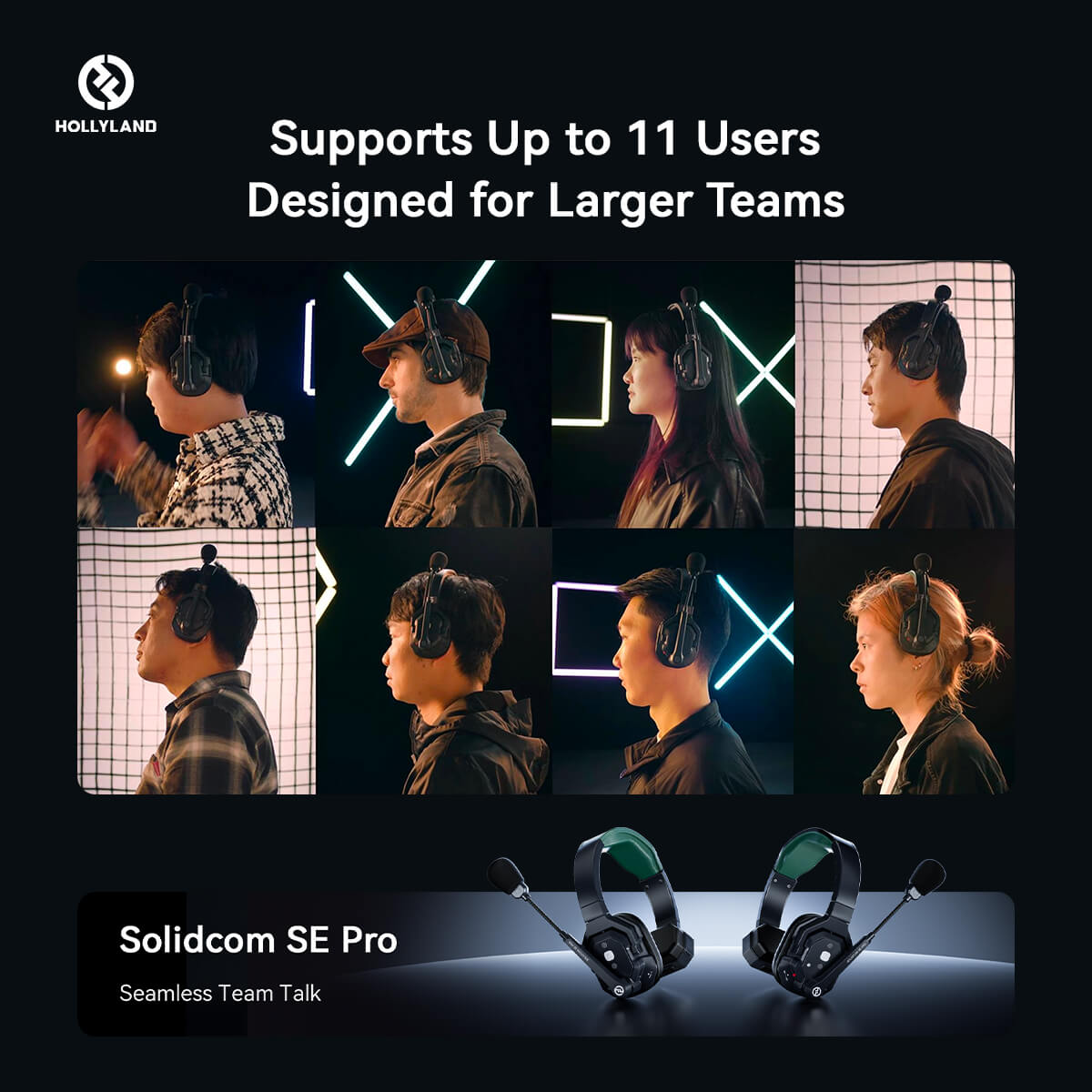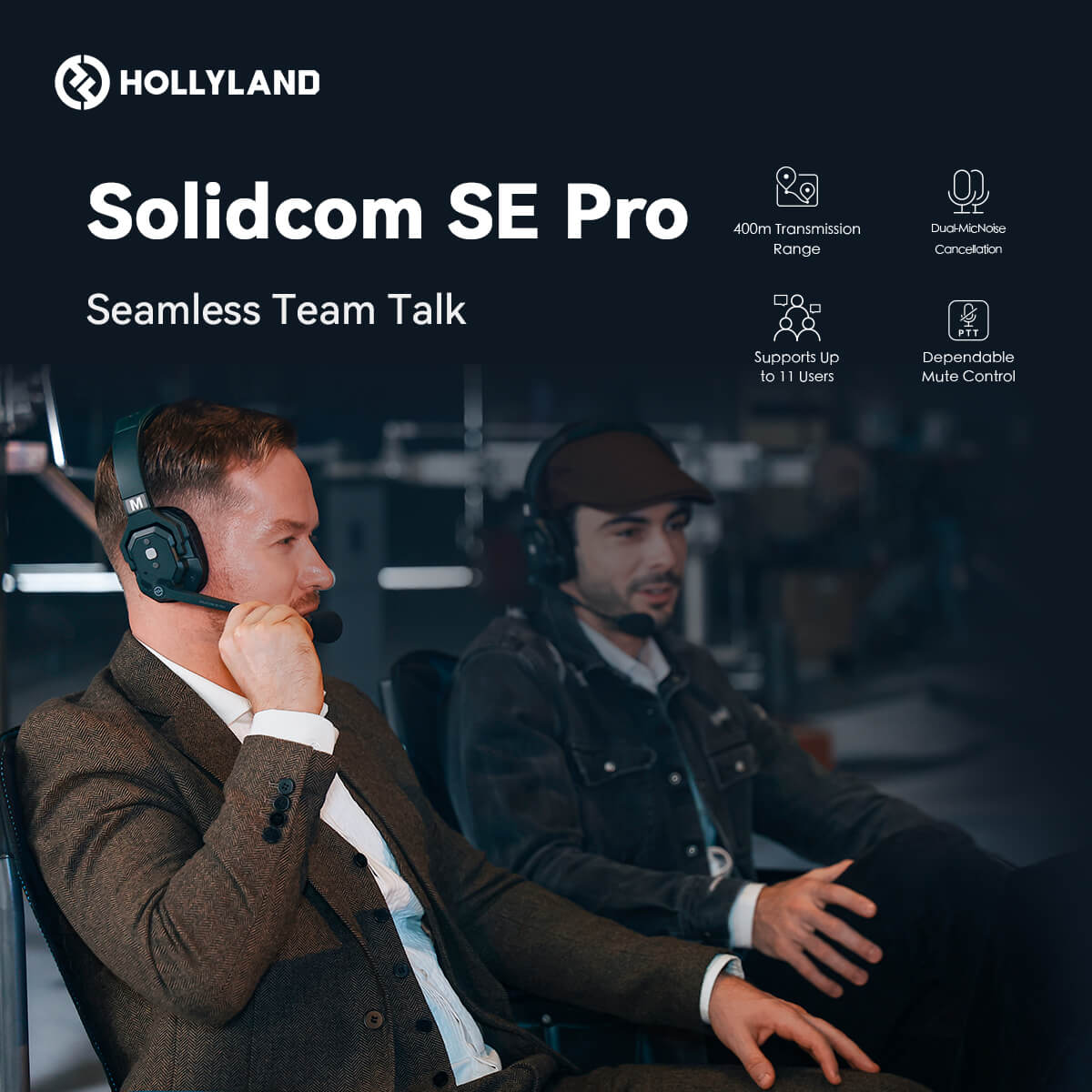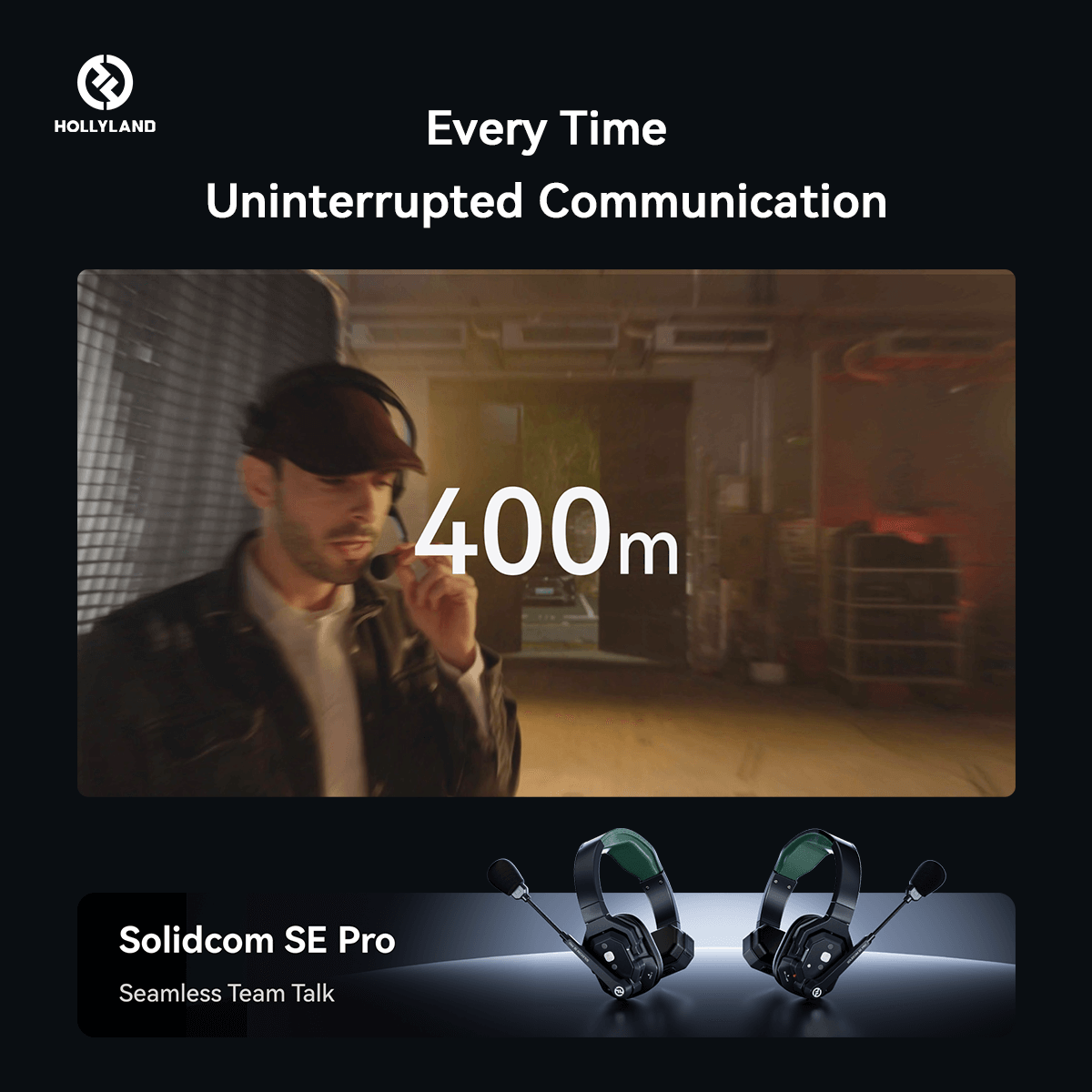Dynamic microphones are a go-to choice for professional voice-over artists, thanks to their durability, versatility, and ability to capture rich, warm vocals without picking up unwanted background noise. Whether you're starting a podcast, recording an audiobook, or lending your voice to animated characters, the right dynamic microphone can elevate your audio quality to new heights. In this review, we will guide you through some of the best dynamic microphones tailored for voice-over work, ensuring you can make an informed decision to match your unique needs and budget. Get ready to discover your perfect audio companion!
When choosing the best dynamic microphone for voice-over work, several criteria must be considered to ensure clarity, durability, and performance. Here's a breakdown of the key factors:
- Sound Quality: The microphone should capture the natural tone of your voice with minimal noise and distortion. Look for a device that provides a smooth frequency response and handles the nuances of human speech well.
- Durability: Voice-over sessions can be lengthy, and equipment may be subject to regular wear and tear. Opt for a robust, well-built microphone that can withstand long hours of use.
- Cardioid Pickup Pattern: This refers to how the microphone picks up sound. A cardioid pattern is ideal for voice-overs since it focuses on the sound in front of the microphone and rejects background noise, preventing echoes and feedback.
- Connectivity: Consider how the microphone connects to your recording setup. XLR connections are professional-grade and preferred for their balanced audio output.
- Versatility: While specialized for voice-over, it may be beneficial if the microphone performs well in various settings, including podcasts, interviews, or musical applications, providing more value for your investment.
- Price: Go for the best microphone within your budget that doesn’t compromise on the essential features needed for high-quality voice-over work.
By considering these factors, you’ll be better equipped to choose a microphone that suits your voice-over requirements and delivers professional-grade audio. Now, let's move on to the top picks.
Creating a comparison table involves listing the key specifications for each dynamic microphone that are relevant to customers looking for the best option for voice-over work. I'll also explain each spec in simple terms after the table for better understanding. Here is an example of a simplified comparison table:
| Microphone Model | Price (approx.) | Type | Frequency Response | Polar Pattern | Connectivity | Additional Features |
|---|---|---|---|---|---|---|
| Shure SM7B | $399 | Dynamic | 50Hz - 20kHz | Cardioid | XLR | Internal shock mount, pop filter, bass roll-off and mid-range emphasis (presence boost) controls |
| Electro-Voice RE20 | $449 | Dynamic | 45Hz - 18kHz | Cardioid | XLR | Internal pop filter, Variable-D for minimal proximity effect |
| Rode Procaster | $229 | Dynamic | 75Hz - 18kHz | Cardioid | XLR | Internal shock mounting, pop filter |
| Sennheiser MD 421-II | $429 | Dynamic | 30Hz - 17kHz | Cardioid | XLR | Five position bass roll-off switch |
| Audio-Technica ATR2100x-USB | $49 | Dynamic | 50Hz - 15kHz | Cardioid | USB, XLR | USB digital output for convenient connection to computers, analog XLR output to connect to traditional soundboards |
Before deciding on which microphone to purchase, consider these specifications in the context of your specific needs, such as the acoustic treatment of your recording space, your existing recording equipment, and the kind of voice-over work you will be doing. Remember that some features might be more important to you than others, and thus the "best" microphone will differ for every user.
Shure SM7B
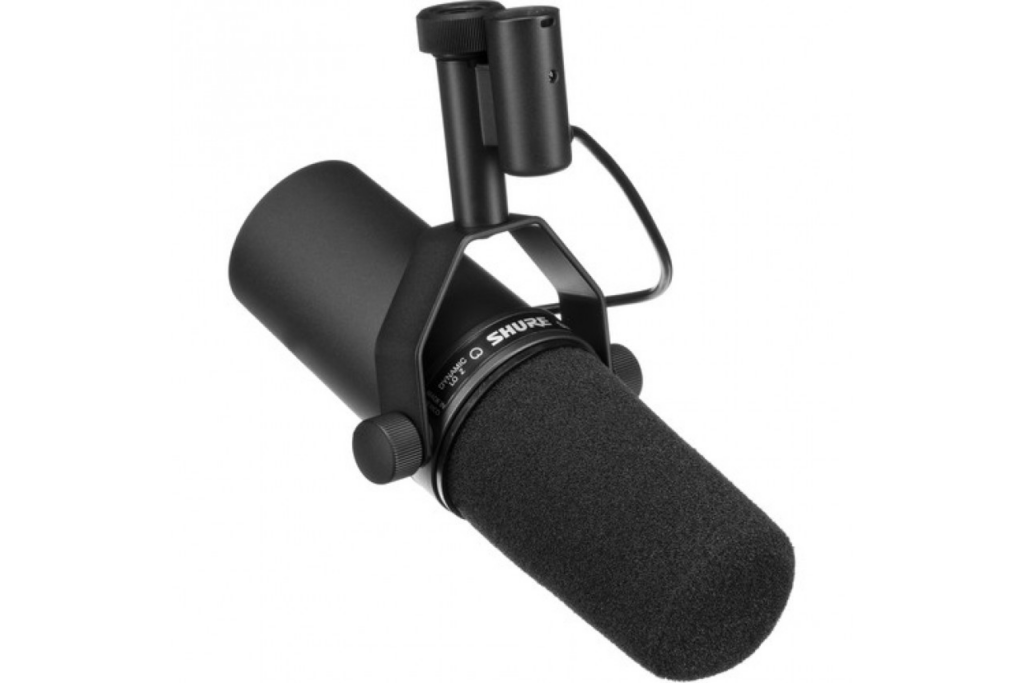
The Shure SM7B is a legendary microphone that’s often regarded as the go-to for professional voice-over work, podcasting, and even music production. Its reputation for delivering rich, smooth vocals has made it a staple in studios around the world.
Overview
When you hold the Shure SM7B, there's an immediate sense of quality—it's substantial and sturdily built, much like a reliable workhorse that's ready for any voice-over session. As I tested it for various voice-over scenarios, what stood out was its ability to capture a warm, natural sound—it almost brings a certain character to the voice that adds a layer of professionalism to your project.
The cardioid polar pattern does an excellent job of rejecting off-axis noise, which is essential if you're recording in a less-than-perfect environment. Also, it features an internal shock mount that helps to cut down the vibrations and handling noise, keeping your recordings clean and focused on you.
What's truly impressive is the Shure SM7B's versatility. Whether you have a deep baritone or a higher-pitched voice, the microphone seems to adapt seamlessly, ensuring broadcast-quality sound. Plus, its built-in windscreen and the larger windscreen it comes with do wonders to reduce plosives (those pesky "p" and "b" sounds that create a pop effect).
Specs
- Polar Pattern: Cardioid
- Frequency Response: 50 Hz to 20 kHz
- Output Impedance: 150 ohms
- Sensitivity: -59 dBV/Pa
- Switchable Frequency Response Settings: High-Pass Filter and Presence Boost
Pros:
- Exceptional audio quality with a rich, full-bodied sound.
- Excellent at rejecting background noise and minimizing plosives.
- Durable construction that’s built to last.
- Versatile across different vocal types and applications.
- Classic and professional design that looks the part in any studio.
Cons:
- Relatively high price point compared to other dynamic options.
- Requires a decent preamp or audio interface to make the most of its low sensitivity.
- May be overkill for beginners who are just getting started in voice work.
Price
The Shure SM7B typically retails around $400. While it's at the higher end for dynamic microphones, for those committed to producing high-quality voice over work, this microphone is often viewed as a valuable investment. The performance and reliability can justify the cost for professionals who demand the very best.
In summary, the Shure SM7B strikes a balance that few microphones can achieve—it brings out the best in your voice while ensuring that ambient noise doesn't detract from your performance. It is an investment, but one that speaks for itself once you hear the results. Whether you're a seasoned voice-over artist or an aspiring talent seeking that professional edge, the SM7B could be your trusted companion for years to come.
Electro-Voice RE20
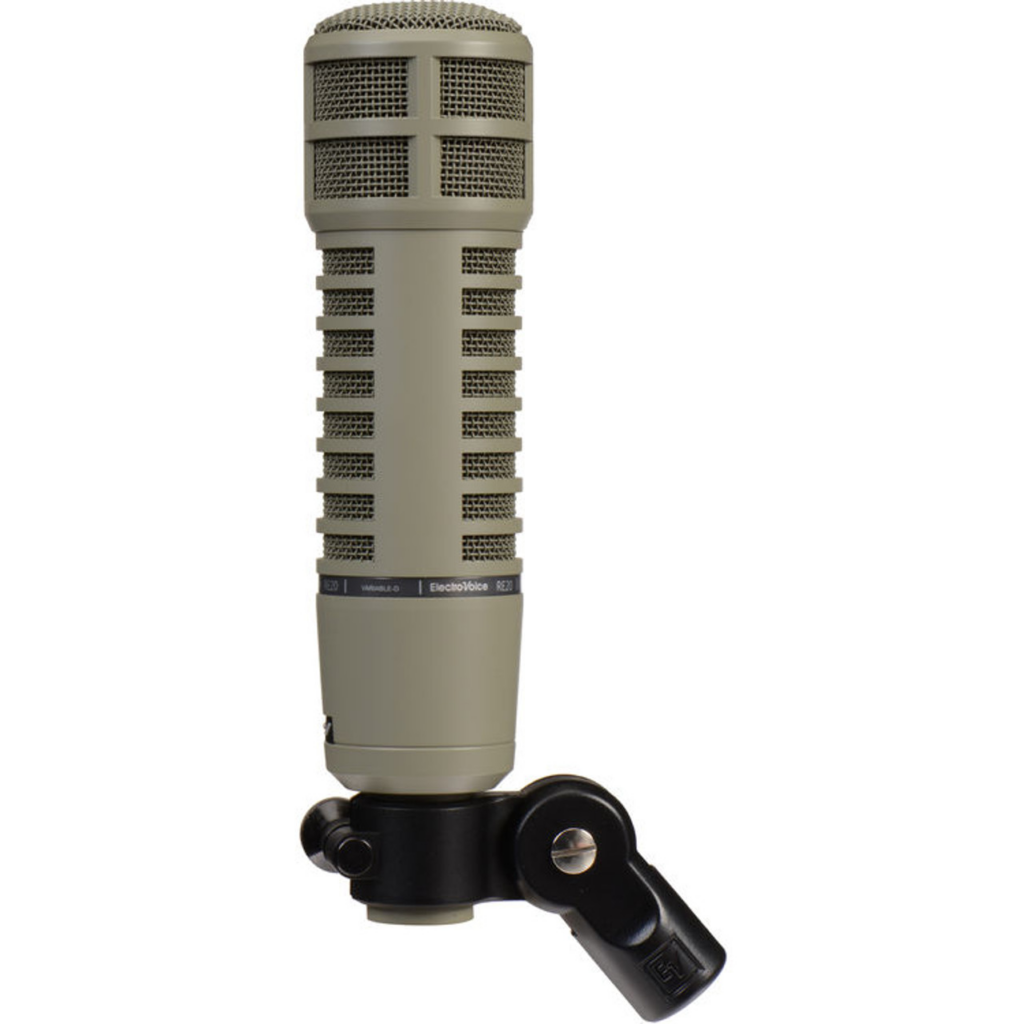
The Electro-Voice RE20 is a legendary dynamic microphone that's been a staple in the broadcasting and recording industries for years. Revered for its natural voice reproduction and versatility, it's a powerhouse that has seen use on everything from radio to podcasts, and even in recording studios for vocals and instruments.
Overview
The RE20 has that classic look and presence that immediately signifies seriousness about sound quality. When I first got my hands on it, I could tell it was built to last with its sturdy metal construction. Using it for voice-over work, I noticed that it captures the nuances of the voice splendidly, all while rejecting off-axis sounds and room noise like a champ. There's also this unmistakable smoothness in its response that flatters the voice, ironing out harsh highs and bolstering the lows without ever sounding muddy. It's like having a ‘mix-ready’ sound straight out of the microphone.
What I love about the RE20 is its Variable-D design, which minimizes proximity effect. That's a technical term for the bass boost that happens when you get too close to the mic — with the RE20, your voice stays consistent, even when you move around. Another gem is the integrated humbucking coil, making it immune to electrical interference, so your recordings are clean even in less-than-ideal environments.
Specs
- Type: Dynamic cardioid
- Frequency Response: 45Hz - 18kHz
- Impedance: 150 ohms
- Connector: XLR
- Built-In Hum-Bucking Coil
- Variable-D for minimal proximity effect
- Integral blast and wind filters
Pros
- Exceptional voice reproduction with a smooth sound signature.
- Built-in pop filter and shock mount reduce plosives and handling noise.
- Virtually no proximity effect thanks to the Variable-D design.
- Durable build quality that feels like it can last a lifetime.
Cons:
- It's quite heavy, which may limit your choice of boom arms or stands.
- Requires a decent amount of gain, so a good preamp or a dedicated mic activator might be necessary.
- Not the most visually appealing mic for modern setups, if aesthetics are a priority.
Price
As for the price, the RE20 usually sits in the mid-to-upper range for dynamic microphones. It's an investment, no doubt, but for voice-over professionals who want that broadcast-quality sound, it's certainly worth it. Keep in mind that you might need to spend a bit more on additional gear like a high-quality boom arm due to its weight, and possibly a preamp to ensure you get enough clean gain.
Rode Procaster Dynamic Microphone

The Rode Procaster is a professional-grade dynamic microphone designed specifically for voice-over applications and broadcast scenarios. It's renowned for its robust construction, high-quality performance, and ability to capture vocal clarity even in less-than-ideal recording environments. Let's delve into what makes the Rode Procaster stand out.
Overview
Upon first glance, the Rode Procaster exudes a sense of durability. It has a solid metal construction that feels substantial in the hand—this isn't a mic that will shy away from a few bumps and knocks.
Now, when it comes to voice-over work, one main hurdle is often the ambient noise of the room or space you're recording in. This is where the Procaster truly excels. Its tight polar pattern does an impressive job at rejecting off-axis sounds, meaning that background noise is kept to a minimum. I've found this feature particularly invaluable when working in a home studio that isn't perfectly soundproofed.
The sound quality can only be described as crisp and focused. There's a noticeable presence boost that brings life to spoken words, enhancing intelligibility and ensuring that your voice cuts through any mix. The low end is also tailored to reduce the proximity effect—a common issue with dynamic mics where getting too close results in an exaggerated bass response. With the Procaster, the voice sounds natural and balanced, regardless of the speaker's distance from the mic.
Specs
- Acoustic Principle: Dynamic
- Polar Pattern: Cardioid
- Frequency Range: 75Hz - 18kHz
- Output Impedance: 320Ω
- Sensitivity: -56 dB re 1 Volt/Pascal (1.60mV @ 94 dB SPL) +/- 2 dB @ 1kHz
- Connector: XLR
- Weight: 745g
Pros:
- Excellent ambient noise rejection, ideal for untreated spaces.
- Built-in pop filter reduces the need for external pop shields.
- Presence boost enhances vocal clarity.
- Solid construction that's built to last.
Cons:
- Heavier than some other mics, which could require a sturdy stand.
- Lacks versatility for non-voice applications due to the tailored frequency response.
- Requires a decent amount of gain, so a good preamp or audio interface might be necessary.
Price
As for the price, the Rode Procaster generally hits the middle ground in the dynamic microphone market for voice-over work. It's less expensive than some high-end models, while offering superior performance to many budget microphones. Pricing may vary depending on the retailer, but it usually falls within a reasonable range for the premium quality it delivers.
In my opinion, the Rode Procaster is an excellent investment for anyone serious about voice-over work, podcasting, or any application where vocal clarity and noise rejection are paramount. It strikes that sweet spot of price, performance, and durability, making it an option worth considering for both budding and seasoned professionals alike.
Certainly! Let's start by setting up the listicle and then I'll dive into an in-depth review of the Sennheiser MD 421-II.
Sennheiser MD 421-II
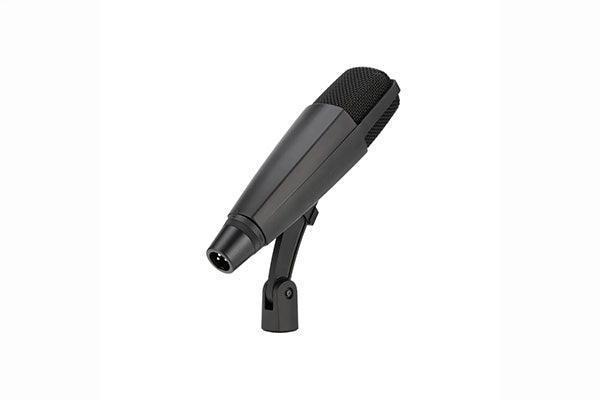
Overview
The Sennheiser MD 421-II stands out in the world of voice-over microphones for its robust design and sonic versatility. It's a dynamic, cardioid microphone that has made a name for itself not only in radio broadcasting but also across a variety of recording applications, from instruments to vocals. My personal experience with the MD 421-II has been nothing but stellar. Its ability to capture the natural qualities of voice without the need for excessive EQ or processing makes it a go-to for a warm, yet detailed sound. The build quality is exceptional, imparting a feeling of durability, which is crucial for a session's demanding work pace.
Specs
- Polar Pattern : Cardioid
- Connector : XLR
- Frequency Response : 30 - 17000 Hz
- Nominal response : 200 Ω
- Min. Terminating impedance : 200 Ω
- Sensitivity : 2 mV/Pa +- 3 dB
- Included accessories : Mic Clip
Pros:
- Excellent reputation for durability and reliability
- Remarkable feedback rejection, which is ideal for live settings
- The five-position bass roll-off adapts to a plethora of voice characteristics
- Great at handling high SPLs without distortion
Cons:
- The unique clip design might be cumbersome for some users
- It lacks an integrated pop filter, which is often necessary for voice-over work
Somewhat pricier than some other dynamic microphones in its class Price The Sennheiser MD 421-II is generally priced around the mid to high range for dynamic microphones, reflecting its professional quality. From what I've seen, it's worth every penny for voice-over artists who are looking for a long-lasting, versatile microphone.
Audio-Technica ATR2100x-USB
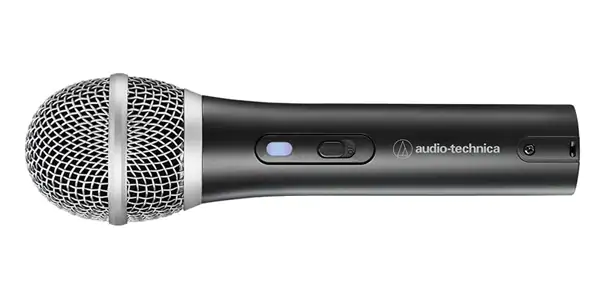
Overview:
The Audio-Technica ATR2100x-USB is a versatile and affordable microphone that is well-suited for voiceover work. Notably, it is a dynamic mic, meaning it's robust and excellent at isolating the speaker’s voice from ambient noise—ideal for recording in less-than-perfect environments. What sets it apart from many competitors is its dual output. The ATR2100x-USB offers both USB and XLR connections, making it incredibly easy to use with a variety of equipment, from computers to professional audio interfaces. Upon testing, I was impressed with its clear, natural sound reproduction and found its build quality to be robust for the price point.
Specs:
- Microphone Type: Dynamic
- Polar Pattern: Cardioid
- Frequency Response: 50-15,000 Hz
- Output Connector: USB Type-C, XLR
- Accessories Included: Tripod desk stand, threaded stand clamp, USB-C to USB-A cable, and XLR to XLR cable
Pros:
- Dual USB and XLR outputs offer versatility in connectivity.
- Plug-and-play convenience with computers, requiring no special drivers or software.
- The cardioid pickup pattern helps in minimizing background noise.
- Solid build quality gives it durability for daily use.
- Comes with useful accessories, like cables and a desk stand, adding value.
Cons:
- The lower frequency response cap at 15 kHz might miss some of the airiness in the upper frequencies that condenser microphones capture well.
- Some voiceover professionals might prefer a microphone with an even flatter frequency response for the most natural sound reproduction.
- While solid, the handheld design might not be as professional-looking in studio settings compared to some high-end models.
Price:
The Audio-Technica ATR2100x-USB falls in the budget-friendly category, generally retailing for under $100. The price makes it a compelling option for those who are just starting in voiceovers or podcasting, as well as for established professionals looking for a reliable and convenient secondary microphone.
Personal Opinion:
In my use of the ATR2100x-USB, I found it to be a reliable performer. It's a no-fuss solution that provides clear audio quality for voiceover applications. The inclusion of both USB and XLR outputs can be a game-changer for users who might transition from amateur to professional work environments, allowing the microphone to grow with your setup. Although it might not compare to the very high-tier microphones used in professional studios, its ease of use and clear sound make it a standout option in its price range.
Conclusion:
In the world of voice-over production, the right tool can make all the difference. The dynamic microphones we’ve explored today offer a blend of durability, sound quality, and versatility, making any of them a capable addition to your audio toolkit. Whether you're just starting out or looking to upgrade, the best dynamic microphone for your voice-over work depends on your specific needs, preferences, and budget. Remember, the key is to choose a microphone that captures the true tone of your voice and fits seamlessly into your recording environment.
While dynamic microphones offer great voice-over quality in studio settings, sometimes flexibility and freedom of movement become essential for creative scenarios. A wireless lavalier microphone could perfectly complement your dynamic mic setup, delivering professional audio in scenarios that demand mobility without sacrificing clarity.
Best Seller
Sale
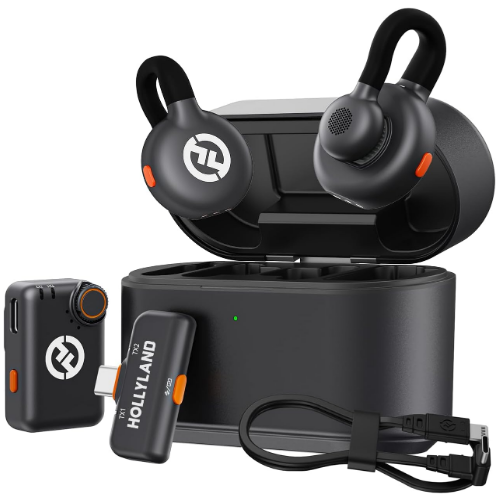
Hollyland LARK M2S - Wireless Clip-on Microphone
- 7g Lightweight, Titanium Clip, Discreet Design
- Clear sound with 24-bit/48kHz, 70dB SNR, 116dB SPL
- Noise Cancellation & 300m Long-Range Stability
- Works with Camera/iPhone/Android/Laptop
- Perfect for Content Creators, Online-Teaching, Streaming
$139
$159
FAQs:
1. What makes a dynamic microphone good for voice-over work?
Dynamic microphones are well-suited for voice-over because they are robust, handle high sound pressure levels well, and typically offer a warm sound that's ideal for spoken voice. Their directional pickup patterns help isolate the speaker's voice from background noise.
2. Do I need a pop filter with a dynamic microphone?
Yes, using a pop filter with a dynamic microphone is recommended to mitigate plosive sounds—those harsh "P" and "B" sounds can cause unwanted spikes in your audio and negatively impact the clarity of your recordings.
3. Can I use a dynamic microphone for both voice-over and podcasting?
Absolutely! Dynamic microphones are excellent for both voice-over and podcasting. They're often favored for their ability to deliver clear audio in less-than-ideal acoustic environments, which is common for podcast setups.



























.png)


